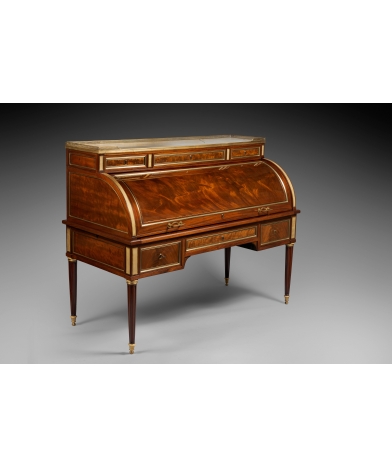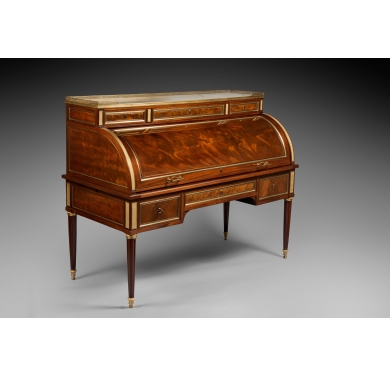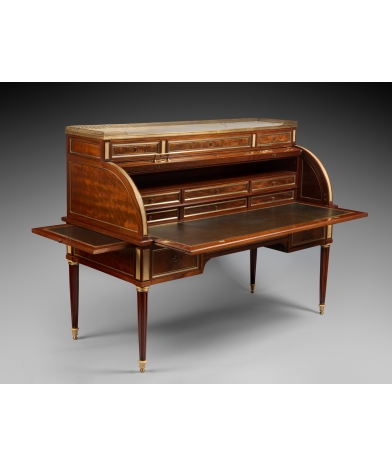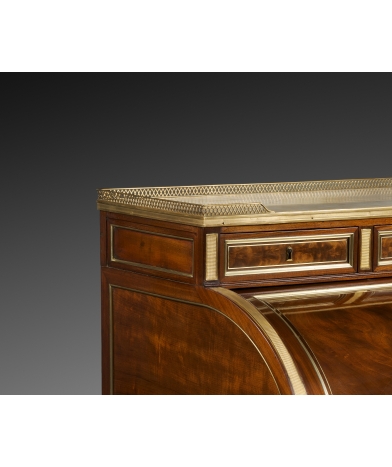Large Cuban Mahogany Cylinder Desk
Louis XVI period, circa 1780
Dimensions : H. 127cm x W. 162 x D. 76 cm (Tray height 75cm)
This superb cylinder desk rests on strong solid mahogany legs. It is veneered on all sides with Cuban mahogany leaves, an important criterion for this type of furniture. With its imposing dimensions, this cylinder has an unusual working and storage surface, which is further enhanced by leather-covered side pulls.
The abundant bronze fittings are finely chiselled. In particular, the tapered hooves ending in a ball, similar to the models that Adam Weisweiler designed for his consoles, emphasise the line of the tapered and slightly swollen legs. The 13 bronze frames that decorate the drawers, the cylinder and the sides neutralize the massive aspect that these large desks often have. The beautiful gilding of the rich upholstery enhances the mahogany. Because the other great quality of cylinder desks is the choice of mahogany used. Here, the mahogany is lightly flamed in the frames and "threaded" all around. It has an extremely fine grain and a colour typical of the Cuban provenance.
To better understand what is called "mahogany", here is some information taken from the internet. It is clear that exotic woods from Africa and Asia have also been called "mahogany". The following article presents these woods as having "very similar qualities"; these are physical qualities, as observation shows that the aesthetic qualities are not the same.
« Mahogany refers to a group of tropical trees in the Meliaceae family, whose main characteristic is that the wood is pale pink to red in colour, fragrant, durable and easy to work. The name mahogany refers in a restricted sense to American and West Indian trees of the genus Swietenia, firstly Swietenia mahagoni, then Swietenia macrophylla. It also refers to Cedrela odorata, which is exploited in the same regions. But the name has been extended to other related genera whose wood has 'very similar' qualities, notably the African mahogany trees of the genus Khaya (and sometimes the genus Entandrophragma), as well as Asian species of the genus Toona. »
The state of preservation of this desk is particularly excellent. The thickness of the mahogany leaves and the quality of the oak frame have allowed this piece to keep its elements (wood, bronze and marble) intact. Extensive restoration has been undertaken on this desk, mainly to re-varnish the four sides and the interior. The leather is not original, but it is old, probably redone in the middle of the 20th century. This desk comes from a private collection where it has remained since 1964, acquired from the "Galerie des Laques", an antique dealer installed in the rue du cherche-Midi and with a great reputation for the quality






